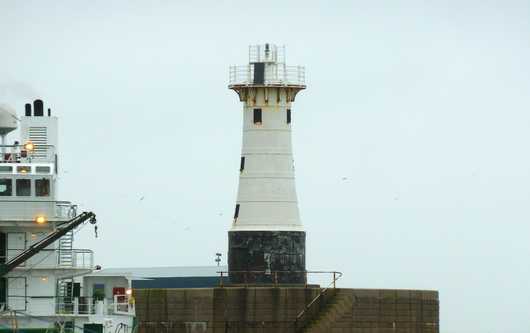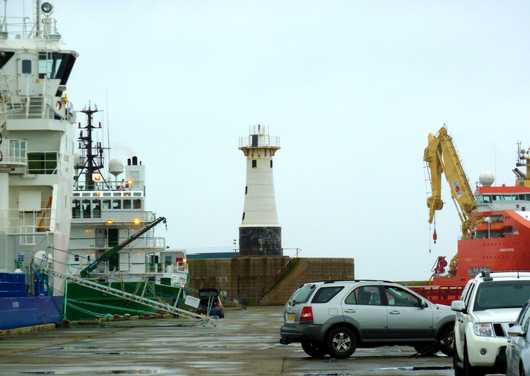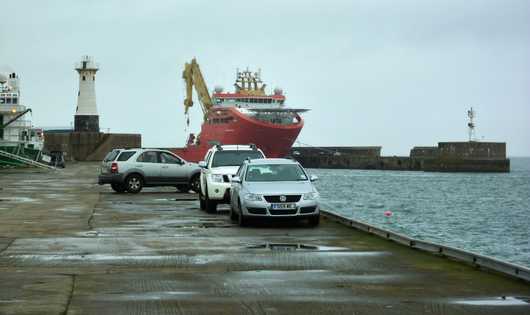Peterhead South Breakwater

Between 1886 and 1956 two large breakwaters were constructed in Peterhead Bay, essentially enclosing the bay, creating Peterhead's Harbour of Refuge. Work commenced on the South Breakwater in 1892. The majority of the breakwater is formed by huge blocks of crushed red granite from Stirlinghill quarry mixed with concrete, each of which was lifted into place by a giant rail mounted Titan crane, guided into place on the seabed by a team of divers. The breakwaters were a huge undertaking, utilizing the hard labour of scottish prisoners.
At the end of the southern breakwater a cast iron lighthouse was built to a design by Chance Brothers, a supplier of many lighthouse optics and equipment, as well as entire lantern rooms and prefabricated lighthouses that were shipped all over the world. The tower on Peterhead's breakwater is nearly identical to the lighthouse on the western end of Dover's breakwater, starting with a cylindrical base that continues deep down into the breakwater itself to give the tower a strong foundation, and begining to curve inwards towards the top of the tower - the key difference being that the lantern is missing.
It's not totally clear whether Peterhead's breakwater lighthouse ever had the lantern installed, and there seems to be no photographic evidence that the tower ever had a lantern, although there are photos as early as 1956 from when the final block was laid on the Northern Breakwater that show the lantern missing at that time also. Atop the tower there is now a platform that supports a modern weatherproof solar-powered beacon that exhibits a red light red twice every 12 seconds.
For much of it's history the Harbour of Refuge saw very little use. Construction had begun in the days when fishing boats were primarilly driven by sail, and with the project taking so long, and later being delayed by two world wars (and with the harbour seeing hardly any use during those) there was little purpose for the the harbour to fulfil, however, it finally found a use when in the early 1970s some of the North Sea's largest oil fields were discovered 110 miles east of Aberdeen. The development of these oil fields saw several of the large ports on the East Coast of Scotland become home to the many vessels that service the North Sea natural gas and oil industry.
Weather permitting the breakwater is open to the public and can be driven along.


